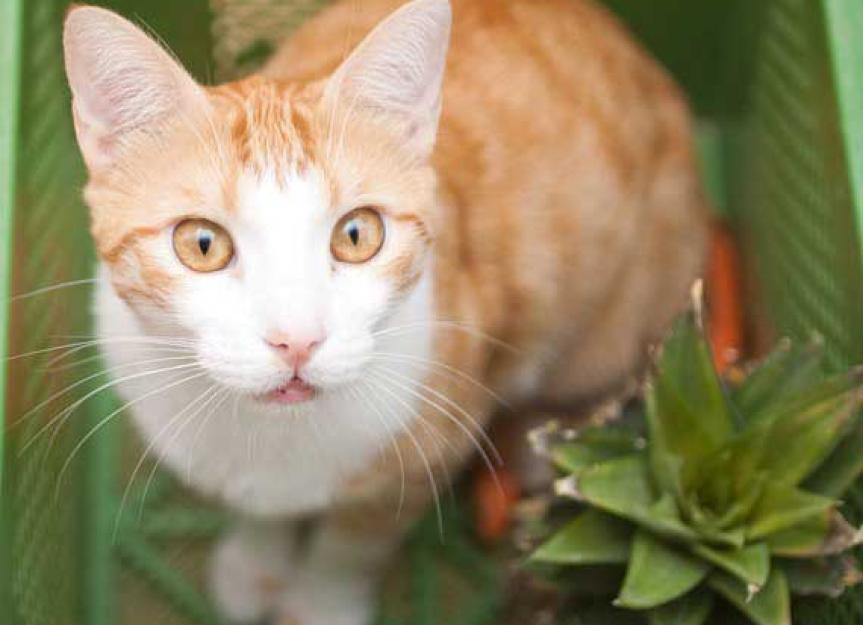What Makes Cats Carnivores?
Cats have unique behavioral, anatomical, and nutritional characteristics that demonstrate their carnivorous nature. Although cats are able to digest some plant products, their physiology is best supported by the nutrients found in animal tissue.
A small cat’s behavior in the wild is quite unique from other well-known mammals. For instance, dogs and large cats hunt and consume large prey every few days. In contrast, domestic cats are more like their close relatives, the African wild cats, in that they hunt and eat small prey frequently throughout the day.
A study of the anatomy of the cat shows many features that support a diet of animal protein. Starting at the genetic level, cats lack a functional sweet-tasting gene. Therefore, instead of carbohydrates, cats prefer to dine on protein and fat. All of their teeth are pointy to help them tear meat off the carcass, and lack occlusal (chewing) surfaces, so they usually swallow pieces of meat whole.
Cats don’t have several of the digestive enzymes necessary for breaking down carbohydrates, so they are unable to utilize simple sugars. Their short intestinal region makes eating a concentrated, highly digestible diet (e.g., animal tissue) imperative for good digestion. Cats also lack a functional cecum, the site where intestinal bacteria digest plant fiber. This limits their ability to digest plant tissue.
Even though cats have been domesticated for thousands of years, they have remained obligate carnivores. This means that they require specific nutrients that are only available in animal tissue. Their unique dietary requirements include:
High Protein Levels
猫对能源的利用蛋白质和therefore require relatively large amounts in their diet. They lack the capability to adapt to dietary changes. They have a constant rate of gluconeogenesis (i.e., making glucose from non-carbohydrate sources) to maintain a relatively constant blood sugar level. They do this by utilizing the amino acids in protein for glucose production.
Essential Amino Acids
Cats are unable to make sufficient quantities of several amino acids (called “essential” amino acids), so they must be consumed on a regular basis. Only animal tissue (i.e., protein) contains these substances. Consuming inadequate amounts of one amino acid, called arginine, can lead to the build-up of toxic levels of ammonia, causing vomiting, muscle spasms, seizures, coma, and death. Taurine, another essential amino acid, is important for the heart muscle and the retina of the eye. Adeficiency of taurinecan lead tocardiomyopathy(a serious disease of the heart) andcentral retinal degeneration(失明)。烟酸(水溶性维生素B), is a metabolite of another amino acid, tryptophan, that is required in the diet.
Fat and Essential Fatty Acids
Fat is highly digestible and functions as a source of energy and essential fatty acids in the cat’s diet. Cats are unable to make several of these fatty acids (e.g., arachidonic acid, linoleic acid) but they are found in high concentrations in meat, fish, and certain plants.
Vitamins
Cats also require higher levels of the several vitamins (e.g., vitamin A, D, E, and B), some of which are only found in animal tissue.
Our feline friends make wonderful companions, but we need to provide them with the best care to ensure they live long, healthy lives. Feeding them a meat-based diet is the most natural and best way to meet their nutritional needs.

Dr. Jennifer Coates
Related:
Heart Disease (Hypertrophic Cardiomyopathy) in Cats
Degeneration of the Image Forming Part of the Eye in Cats
Image:Shirinov/Shutterstock
Help us make PetMD better
Was this article helpful?
